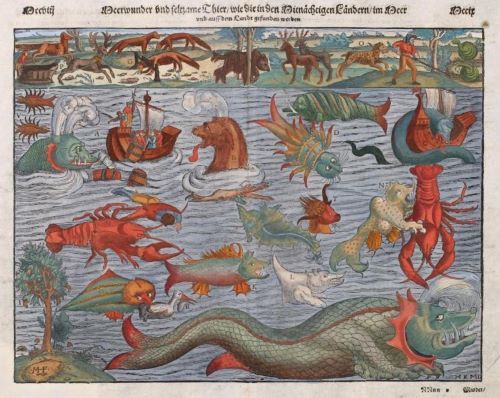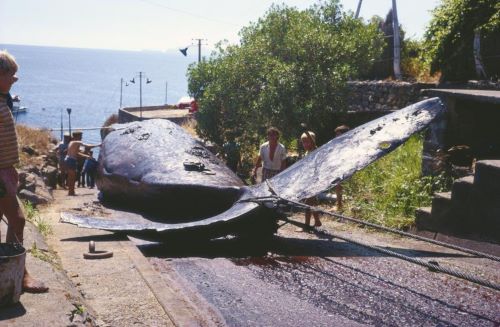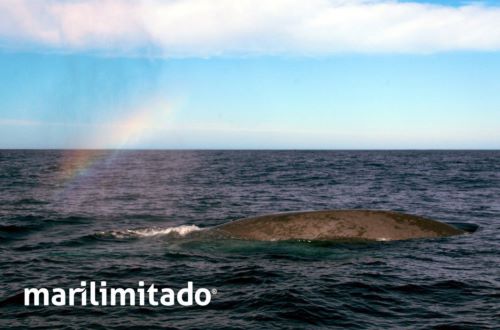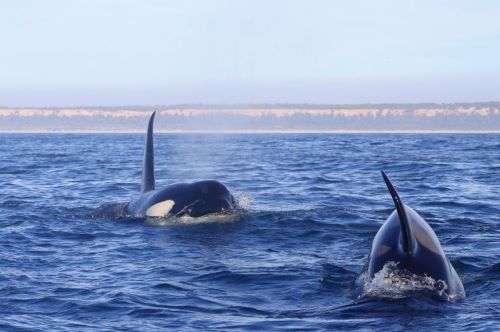

In medieval Europe, whaling was an important economic activity, boosting coastal centers and villages. It reduced after the mid-sixteenth century.

By Dr. Cristina Brito
Assistant Professor of History
CHAM (Centro de Humanidades)
Nova FCSH
There is a current consensus in Westernized societies about the great value and ecological importance of whales. Portugal is no exception, with various research and conservation programs focusing on this issue from the late twentieth century onwards. Yet, was there ever in history any animal more controversial than the whale? The largest animal ever known and still living on Earth is also a great paradox. Living in the ocean realm, the whale—like the sea itself—represents contradiction. It represents within itself ideas of proximity and distance, fear and attraction, and the imposing nature of shores and oceans relative to people. For centuries, the monstrous, large, frightening, stranded, captured, useful, valuable, strange, odd-looking, and beautiful whale caused both repulsion and attraction. Over time, humans scanned sea basins searching for whales and observed them through a wide ethnical, cultural, economic, social, and scientific lens, forming a kaleidoscopic image. They portrayed the whale as a divine work, a mythological beast, a symbolic mirror of human features and behaviors (mostly sins and errors), an omen of tragedies and catastrophes, and a monster made of fat and meat to control and tame.

Whales stranded frequently on the shores of Portugal, reportedly since the Arabian period in the Iberian Peninsula. They were captured and used from very early on, and familiar to people closely connected to the sea and those interested in curiosities. Nevertheless, for most people whales were a strange novelty, an appealing natural event, worth seeing for oneself or experiencing through second-hand reports. In eighteenth-century Portugal, especially in the Tagus Estuary and on the Algarve’s coasts, stranded whales offered room for speculation, poems, illustrations, translations, and news across Europe. However, when the same whales (or similar large cetaceans, as species identification is impossible in most sources) stranded in the Tagus River, just before 1531’s Lisbon earthquake, they brought fear, horror, and awe. Similar responses were had when whales were sighted by navigators off African shores, prior to a storm or shipwreck, or in the open waters of Mar Oceano during early Portuguese exploration of new parts of the world. In early-modern Portuguese written sources on the Atlantic Ocean, whales emerged as “valuable/usable,” “abundant,” and “large.” The “dangerous,” “monstrous,” “marvellous” whale was soon supplanted, becoming an undoubtedly valuable marine resource, fully controlled by the Portuguese Crown monopoly. Continuous shore-based whaling in Iberian Portuguese waters since the Middle Ages, and on the South Atlantic shores of former Portuguese colonial territories since the early seventeenth century, has led to local extirpations of several whale species.

In medieval Portugal, whaling was an important economic activity, boosting coastal centres and villages. It decayed after the mid-sixteenth century, with an eventual exhaustion of local populations. Back then, northern right whales (Eubalaena glacialis) were probably Portuguese whalers’ main targets, similar to Basque whaling. Four centuries later, traditional and industrial whaling in twentieth century Portugal targeted mainly sperm whales (Physeter macrocephalus) in the Azores and common rorquals (Balaenoptera physalus) in mainland Portugal. Since around the eighteenth century, there have been no signs of right whales on the horizon except for two occasions—a sighting off Algarve in 1995 and off the Azores in 2009. Dolphins were occasionally captured in Portugal in the early-modern and modern periods, but apparently there was never a direct hunting effort. Captures only ceased following major efforts by the International Whaling Commission (IWC) to ban whaling and the hunting of small cetaceans. Cetaceans became legally protected in 1981 in mainland Portugal and the Madeira Archipelago and in 1984 in the Azores.

Currently, humpback whales (Megaptera novaeangliae) are occasionally spotted and make headlines in mainland Portugal, along with pods of common dolphins (Delphinus delphis) and coastal resident bottlenose dolphins (Tursiops truncatus). A sighting of a blue whale (Balaenoptera musculus) in the Algarve and a pod of orcas (Orcinus orca) off Lisbon in 2017 made the news. Whales are rather common in Madeira and the Azores, turning these places into important observation hotspots for whales and dolphins. Conversely, in mainland Portugal occasional stranded and sighted whales easily catch the media’s attention and the public’s imagination, increasing interest in these animals and in marine conservation.

Nowadays, most people in Westernized countries feel empathy towards whales. This perception—of whales as beautiful ambassadors of the Ocean—is only recent. Although such perceptions vary across human societies, the whale is currently a marine conservation icon. Several species have been extirpated due to centuries-long exploitation, but following the mid-twentieth-century IWC ban on commercial whaling, the whales are slowly recovering, occupying former areas of distribution and becoming a flagship species for conservationists. Simultaneously, whale watching has emerged as a sustainable way of using the whale as a valuable economic resource and bringing it closer to people’s lives. Portugal followed global trends on marine conservation, species protection, and whale watching, influencing the public perception of whales. In turn, scientific development emerged rather late, with the implementation of stranding networks in the 1970s and continuous research and teaching since the early 1990s. In Portugal, like most European countries, whales have turned from sea monsters into valuable, exploitable resources, and eventually, into global conservation icons due to their being in imminent danger of extinction. No doubt these giants of the sea still astonish generations of people.
Further Reading
- Fox, Kieran, Michael Muthukrishna, and Susanne Shultz. “The Social and Cultural Roots of Whale and Dolphin Brains.” Nature, Ecology & Evolution 1 (2017): 1699–1705. https://doi.org/10.1038/s41559-017-0336-y.
- Hansen, Felipe Valdés. Los Balleneres en Galicia (Siglos XIII al XX). La Coruña: Fundación Pedro Barrié de la Maza, 2010.
- Hoare, Philip. Leviathan; or, the Whale. London: Fourth Estate, 2009.
- Laist, David W. North Atlantic Right Whales: From Hunted Leviathan to Conservation Icon. Baltimore: Johns Hopkins University Press, 2017.
- Silva, Monica A., Lisa Steiner, Irma Cascão, Maria João Cruz, Rui Prieto, Tim Cole, Philip K. Hamilton, and Mark Baumgartner. “Winter Sighting of a Known Western North Atlantic Right Whale in the Azores.” Journal of Cetacean Research and Management 1 (2012): 65–69.
- Szabo, Vicki. Monstrous Fishes and the Mead-Dark Sea: Whaling in the Medieval North Atlantic. Leiden: Brill, 2008.
Originally published by Arcadia: Explorations in Environmental History, 21 (Autumn 2018), under a Creative Commons Attribution 4.0 International license.


